
Universidade Fernando Pessoa
Porto, Portugal

Seismic-Sequential Stratigraphy
(v) Apparent Onlap
Apparent onlap is the onlap observed in any randomly oriented vertical section, which may or may not be oriented parallel to depositional dip.
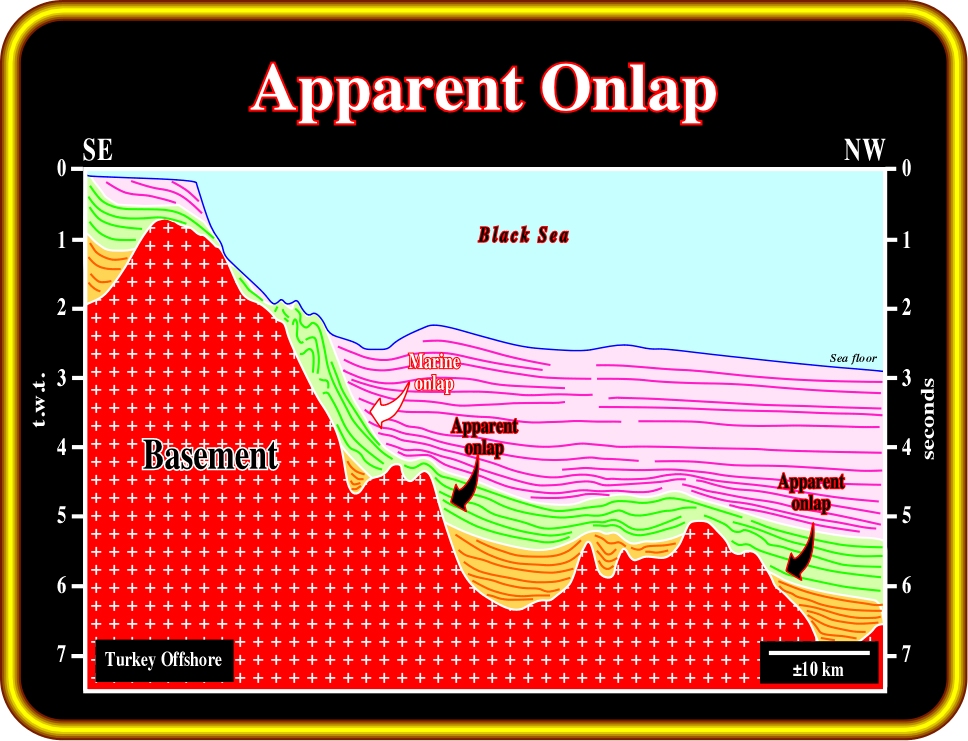
Plate 157 - The onlaps in the lower most sedimentary intervals (yellow and light green) are apparent onlaps. Indeed, this seismic line is oblique to the depositional dip of the lower intervals. On the contrary, in relation to the depositional dip of the upper interval, the line is roughly parallel, so the associated onlaps are marine.
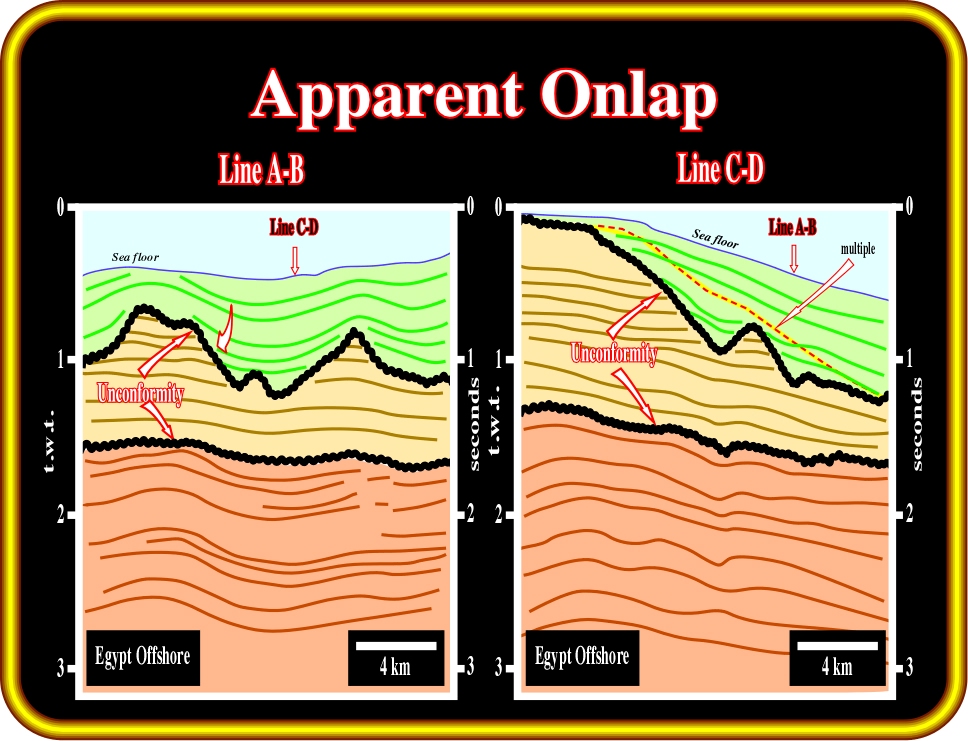
Plate 158- On line A-B, the geometrical relationships of the uppermost interval are apparent onlaps. The seismic line is not parallel to the depositional dip of the rocks composing the concerned interval. On line C-D, which is orthogonal to the A-B line and parallel to the depositional dip of the sedimentary rocks composing the uppermost interval, it is easy to recognize that the geometrical relationships of the strata are not onlap, but downlap (see later). Briefly speaking, on seismic data, the real geometrical relationships are only recognized on an undeformed seismic line parallel to the depositional dip. However, it must be noted, that on a seismic line, the strike of the depositional dip can change from one seismic interval to another.
(v) Non-marine Onlap
Non-marine onlap is the onlap observed in non-marine environments, that is to say, landward of the depositional coastal break.
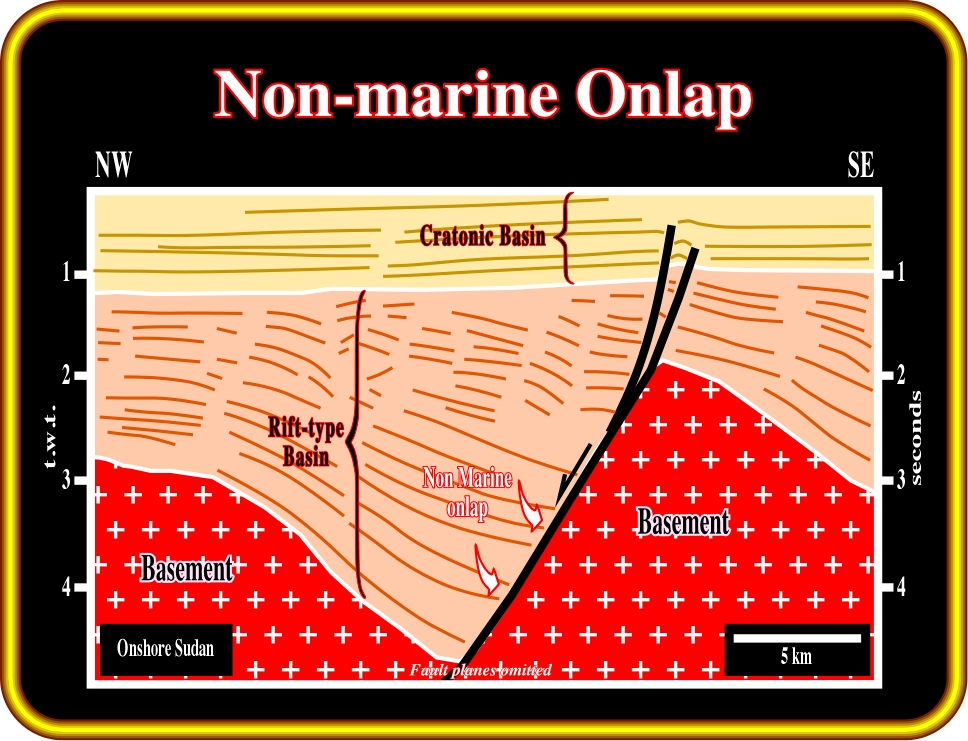
Plate 159- This seismic line comes from onshore Sudan, in which rift-type basins, as the one illustrated above, are overlain by a quite large, but relatively shallow, cratonic basin. An unconformity, which locally can be tectonically enhanced (angular unconformity), separates the rift-type basin from the cratonic basin. In rift-type basins developed in non-marine environments, the onlap of the strata against the basement is non-marine. Actually, on this line, the onlap can even be considered as lacustrine onlap. Indeed, organic rich lacustrine shales (source-rocks) have been recognized by drilling (the giant Unity oil field, is located on the left end of the line).

Plate 160 - Offshore Angola, both, the Kwanza and Congo basins are composed of three types of sedimentary basins successively. On this line, from bottom to top, one can recognize a Paleozoic fold belt (or a granite-gneiss basement), two Upper Jurassic to Lower Cretaceous rift-type basins, which are covered by a Meso-Cenozoic Atlantic-type divergent margin. The onlapping recognized on the rift-type basins is non-marine. Rift-type basins were developed within the Pangea supercontinent, where non-marine environments were paramount.
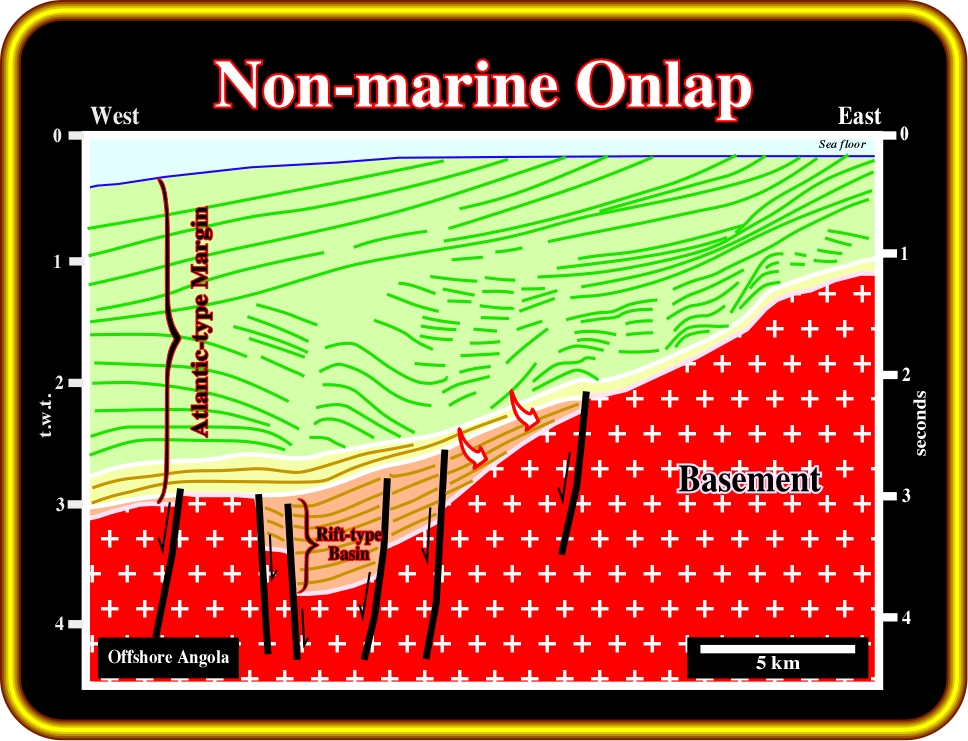
Plate 161 - On this line from offshore Angola, the onlap recognized in the rift-type basin is a non-marine onlap. The predominant depositional environment of the South Atlantic rift-type basin is non-marine. However, in certain rift-type basins, such as the North Sea, the uppermost stratigraphic levels can show a significant marine influence (Kimmeridgian shales).
(vi) True Onlap
When two apparent onlaps are observed on two sections intersecting at right angles, the true onlap is likely to be observed on the section parallel to the depositional dip.
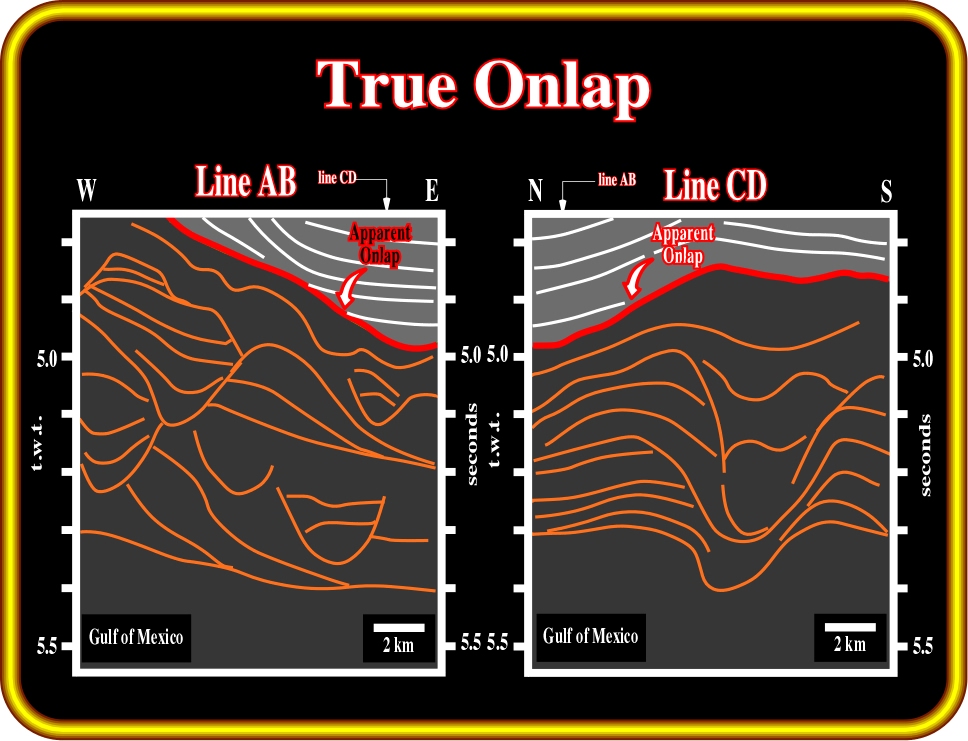
Plate 162 - On these orthogonal seismic lines, located in the Gulf of Mexico, two apparent onlaps can be recognized. So, it is likely that a true onlap will be recognized on the line shot parallel to depositional dip (parallel to clastic sediment supply). These lines illustrate deep-water environments, characterized by turbiditic channel-levee complexes, where onlap geometrical relationships are quite rare. The dominant geometrical relationships are downlap (overbank deposits). Onlap occurs mainly in the overlying intervals as illustrated above.
(vii) Tilted Onlap
A tilted onlap is an apparent geometrical relationship, that looks like a downlap. Generally, it is induced by tilting, compensatory subsidence and salt or shale flowage.
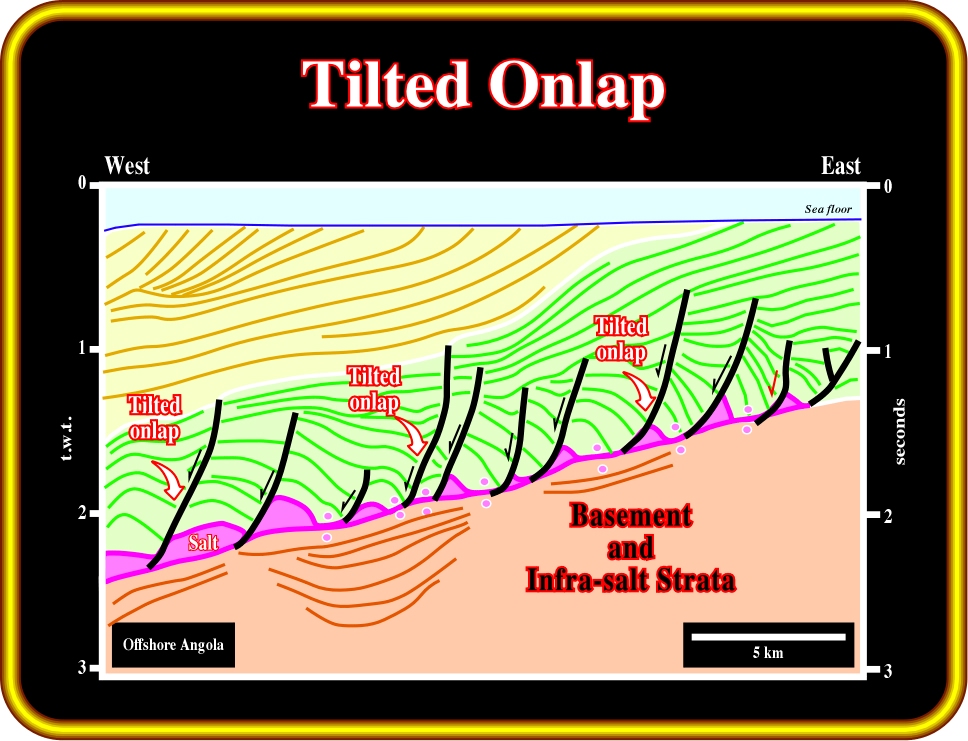
Plate 163 - On this line, in which lateral and vertical salt flowage are paramount, salt-induced tectonic inversions took place. The original onlap geometrical strata relationships were tilted becoming similar, in geometry, to progradational reflectors (downlap). It is important to remember that onlap is a synsedimentary geometrical relationship, which can be more or less deformed by regional or local post-depositional tectonic regimes.
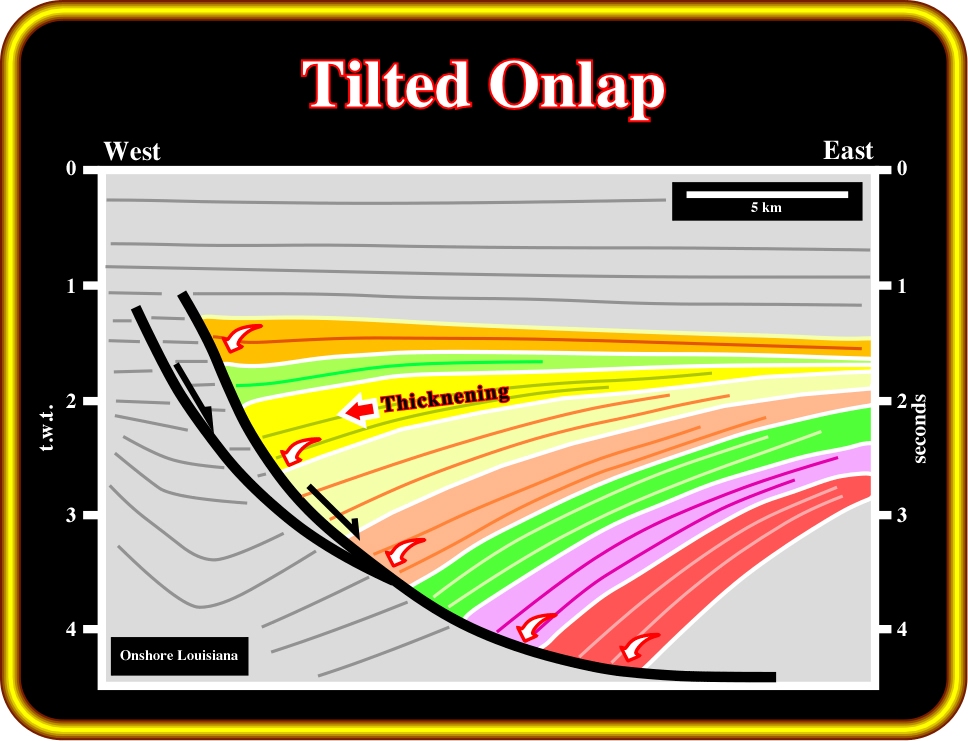
Plate 164 - On this seismic line, from onshore Louisiana, sediments thicken landward towards the fault plane of a large growth fault. The original onlap geometrical relationships were progressively rotated seaward. Subsequently, the seismic surface, defined by reflection terminations against the fault plane, is not an onlap surface, but rather a “tilted” onlap surface. Such tilted reflection terminations should not be confused with downlap. In a downlap geometrical relationship, sediments thin (converge) downdip.
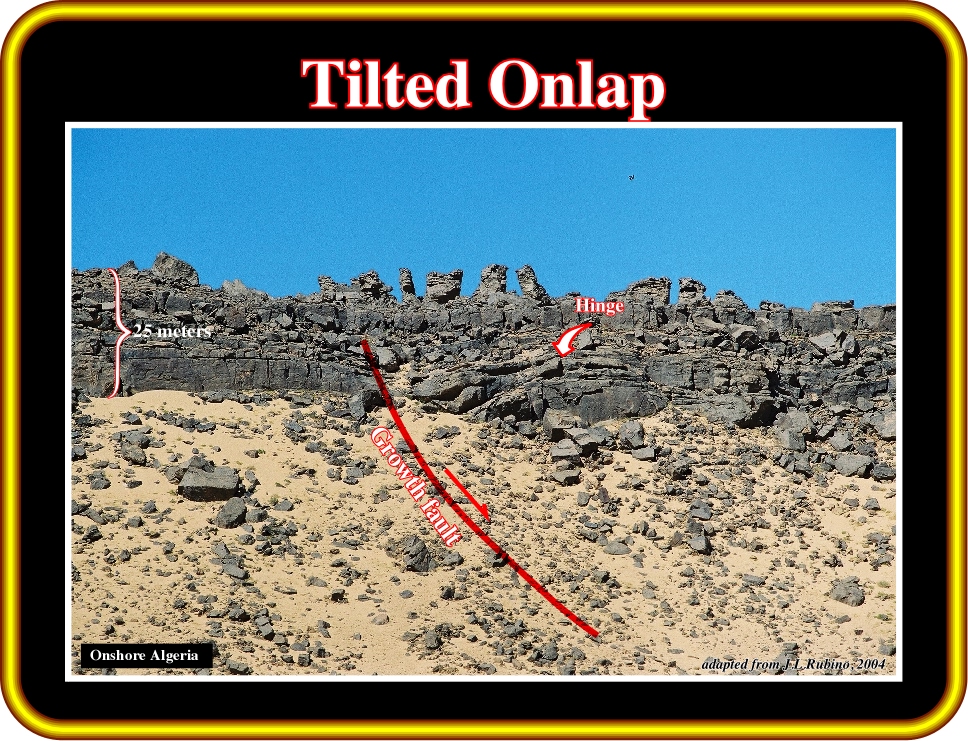
Plate 165 - On this outcrop (onshore Algeria), tilted onlap can be recognized in association with a normal growth fault (in red). The hinge point is also easily recognized. It corresponds to a change in subsidence. Strata thicken toward the fault plane. Tilted onlaps against a fault plane have roughly the same geological meaning as a true onlap. In terms of relative sea level changes, they correspond to a relative sea level rise.

Plate 166 - On this seismic line, a synsedimentary salt flowage tilted the pristine onlap geometrical relationships. Presently, they look like progradational strata. However, as they thicken toward the fault plane, along which they glided downward, they should not be confused with progradational strata. Progradational strata thin, or converge basinward, so the stratigraphic units (and the equivalent seismic interval) become condensed seaward.
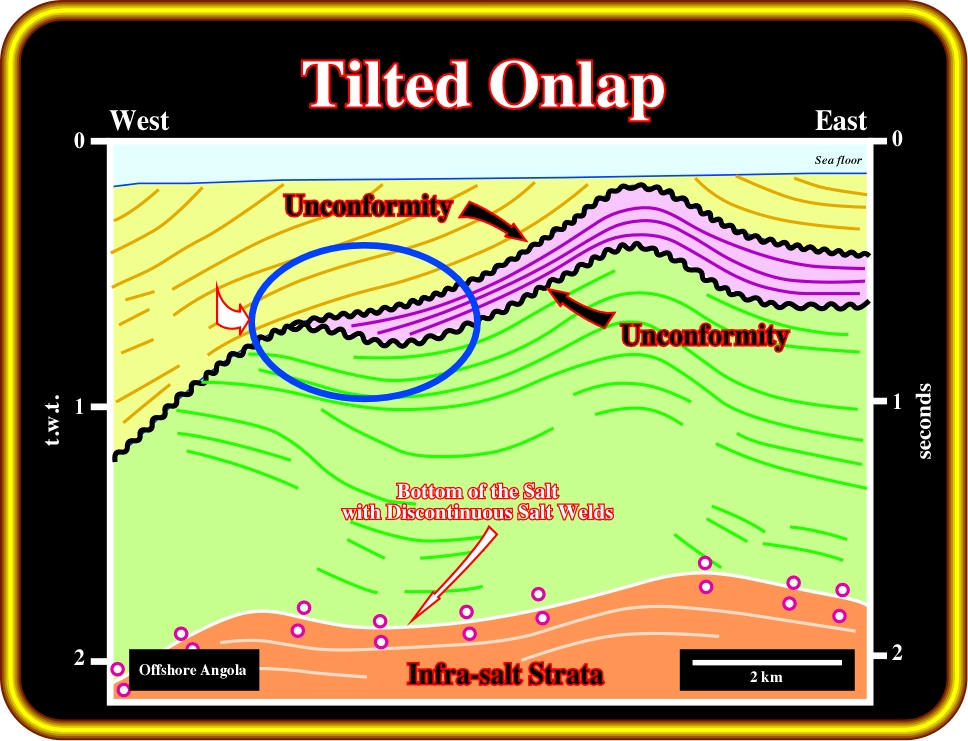
Plate 167 - As illustrated on this line, in salt basins, such as in Kwanza basin, halokinesis (extension) and reactivation of fracture zones (compression) can deform the original geometrical relationships between strata. Here, between two unconformities (relative sea level falls), the original onlaps (distal onlaps) were deformed. Presently, they look like downlaps (see next). However, it seems quite evident that they correspond to an aggradational rather than a progradational unit.